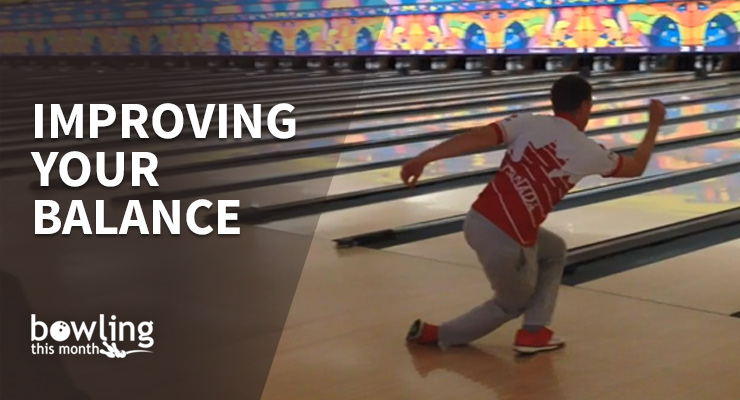Article Contents
- 1. Balance as an athletic ability
- 2. Factors affecting balance in bowling
- 2.1. Center of gravity and points of contact
- 2.2. Timing at the release
- 2.3. Posture
- 2.4. Shoes
- 3. So, what is proper balance?
Note: This article is only available to Bowling This Month subscribers.
Last month, I introduced seven problems that need to be addressed if you want to achieve your full potential. This month, we’re going to take a detailed look at one of those seven: balance. It’s a word that many people use, and most have a good general sense for what it means, but many bowlers rarely consider what goes into achieving proper balance.
First off, it’s important to understand the difference between static balance and dynamic balance. In layman’s terms, static balance is the ability to maintain stability along an axis, without any other force being applied. Dynamic balance occurs when forces are applied along a different axis. For simplicity’s sake, consider an example in the vertical axis with gravity as the force. Standing still on one leg is static balance because no other forces are involved along any non-vertical axes. As soon as you add movement, it becomes dynamic balance.
As far as sports are concerned, balance is considered an athletic ability and it is grouped with coordination under the “motor” category. Both are fundamental abilities for bowlers. From now on, we’re going to go with the definition of balance as the ability to achieve and maintain stability.
But first, there are a couple of key terms to remember:
- Center of gravity: We’re not talking about the core of a bowling ball here. Every object has a center of gravity. The closer that center is to the base of support, the easier it is to achieve balance. As an example, holding a ball against your abdomen has almost no effect on your center of gravity. Stretch out your arms, though, and your center of gravity moves, forcing you to adjust your weight distribution in order to avoid falling over.
- Base of support: This is the part of the object that is touching the ground. The larger the base of support, the easier it is to be balanced. In the case of a person, the base of support is normally your feet, but it can also be one or both hands, as well. Think of a baby just learning to walk. They are much more stable on all fours than on both feet because their base of support is much larger when they crawl.
Balance as an athletic ability
Standing and walking, two of the body’s most natural movements, require balance. We learn these at an ...
Already a premium member? Click here to log in.


 (Only
(Only 